How do you divide a room with curtains? Designers on embracing this 'soft architecture' trend
Using curtains to divide a room up has become a new design trend, helping to compromise between the beauty of open plan living with the functionality of separate spaces
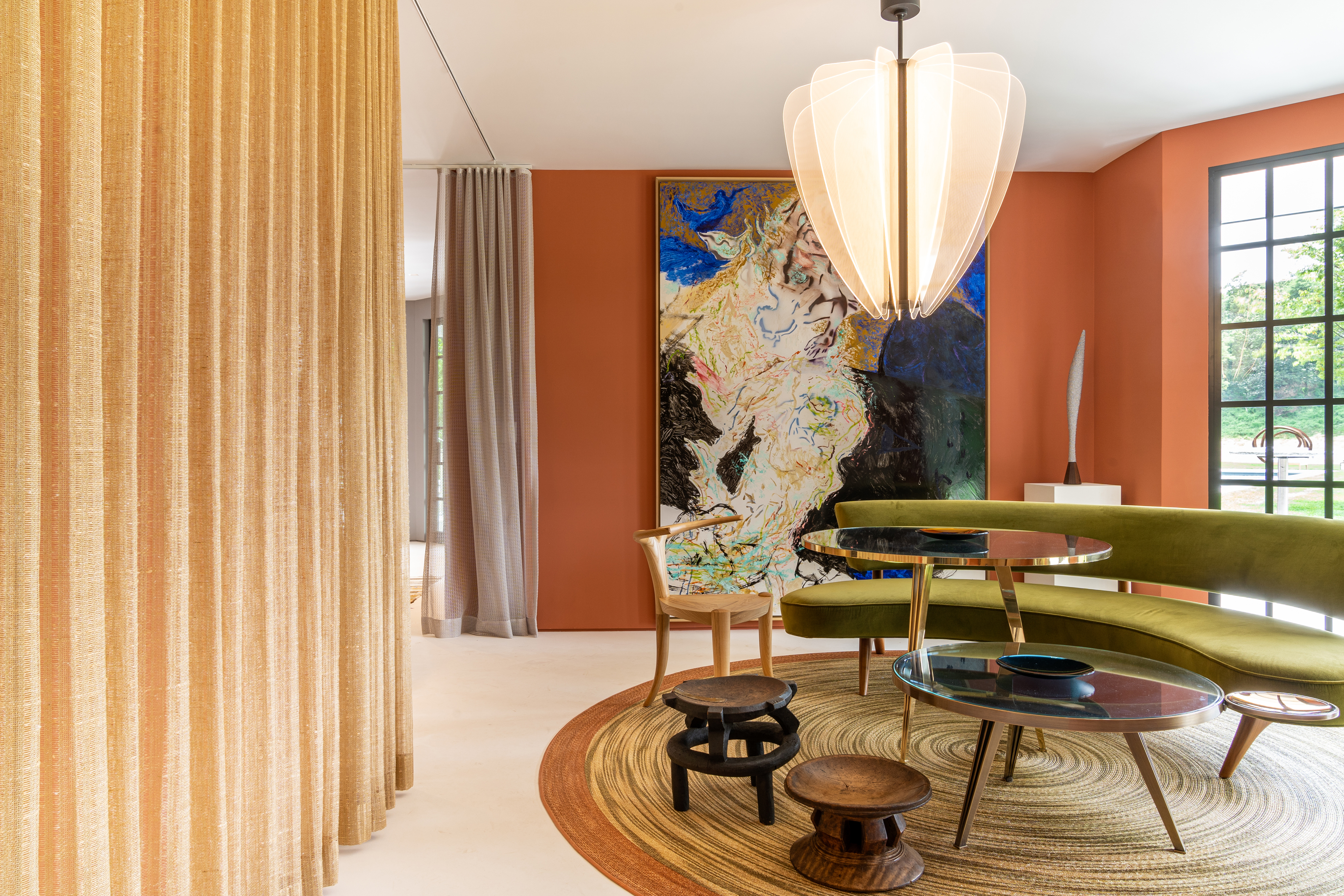

If I ever happen to find myself in any one of the offices belonging to a cool business (or any company that hires a cool interior designer, anyway), there's one design trend I always spot. To bridge the functionality of huge open-concept workspaces with the need to create separate, private areas from time to time, many modern designers are incorporating ceiling-mounted curtains in their office schemes that can be used to divide a room temporarily.
However, this trend has transcended beyond offices into our homes, too. Interior designers and architects are now using curtains to create room dividers in open-concept spaces, not only offering the best of both worlds in terms of having open spaces that can quickly become more intimate and cozy, but also introducing volumes of textile that add softness that traditional room divider ideas don't.
So, how do you divide a room with a curtain successfully? We take a look at some designer schemes that have got it just right.

Luke is a design writer and award-winning blogger, who writes about the latest trends and clever ways to improve your home. Here, he's curated some ingenious spaces that use curtains as room dividers, as well as getting insight from the designers behind them.
How to divide a room with a curtain
Curtains used as internal room dividers aren't seen regularly in many residential spaces, but where they are, they often become a statement-making feature of the space. 'I love using curtains as a form of soft architecture in spaces,' says New York-based interior designer Leyden Lewis. 'The density of the curtain fabric selection can change the feel of a space - a more perforated weave can filter in light, creating textural shadows and passing glimpses of bodies and silhouettes.'
1. Link a divider to your window treatments
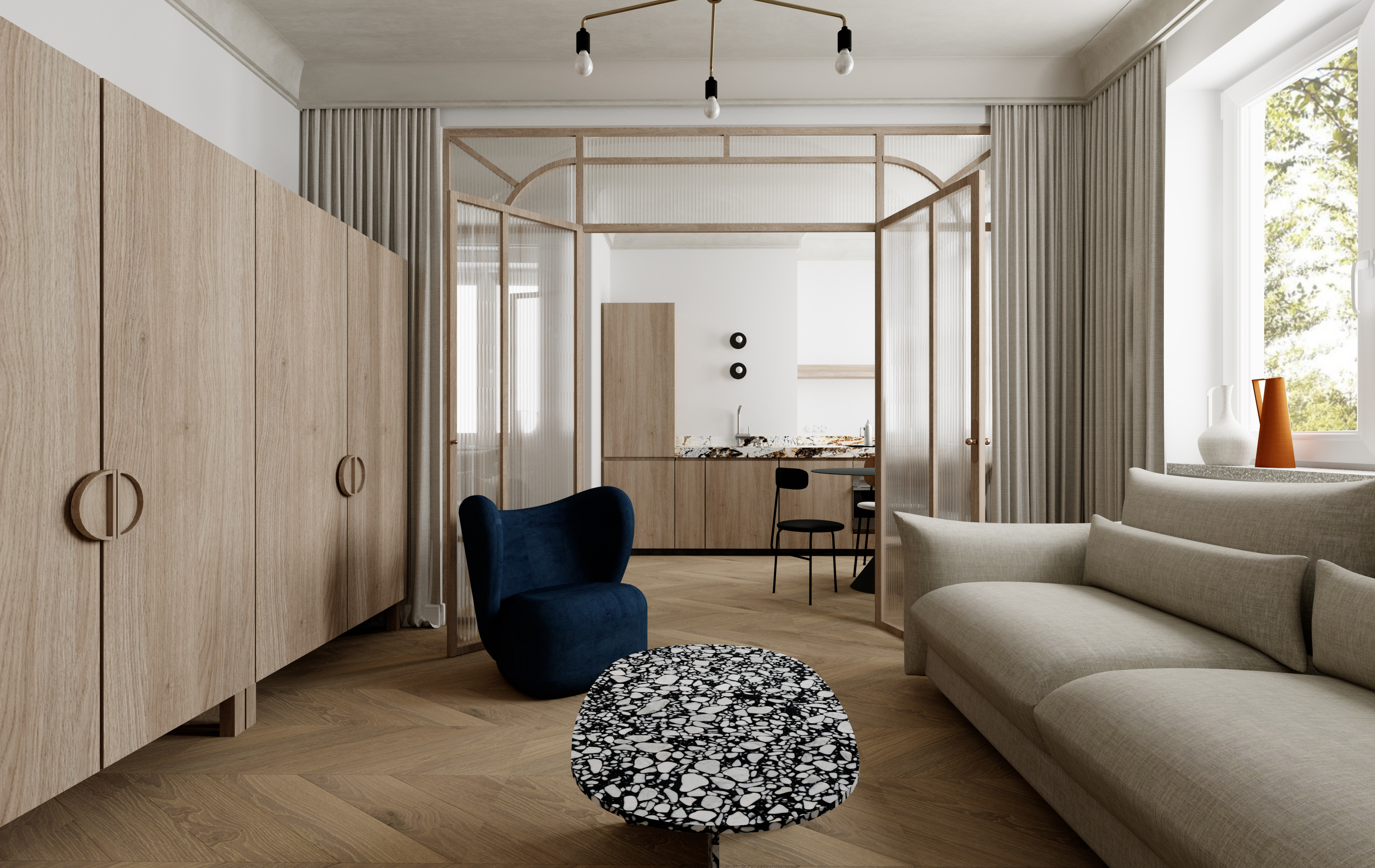
Using a curtain as a room divider will sometimes mean that there's a curtain in a place you wouldn't usually expect. The effect can be a little jarring when not applied in the right way.
Including a deep curtain stack or using a curtain across an expanse of wall as an alternative wall covering are simple ideas where these textiles can be used to manipulate the look of a space.
Another idea is to connect a curtain divider to the more-expected application as a modern window treatment. In the design of this apartment, interior designer Justyna Wasiluk-Ptaszyńska of Home and Wood used a curtain to create a divide between the kitchen and living space. By using the same reference as the curtains used for the window treatment, this design feels like a natural fit for the space, framing the ornate glass screen between the spaces.
2. Hide away private spaces
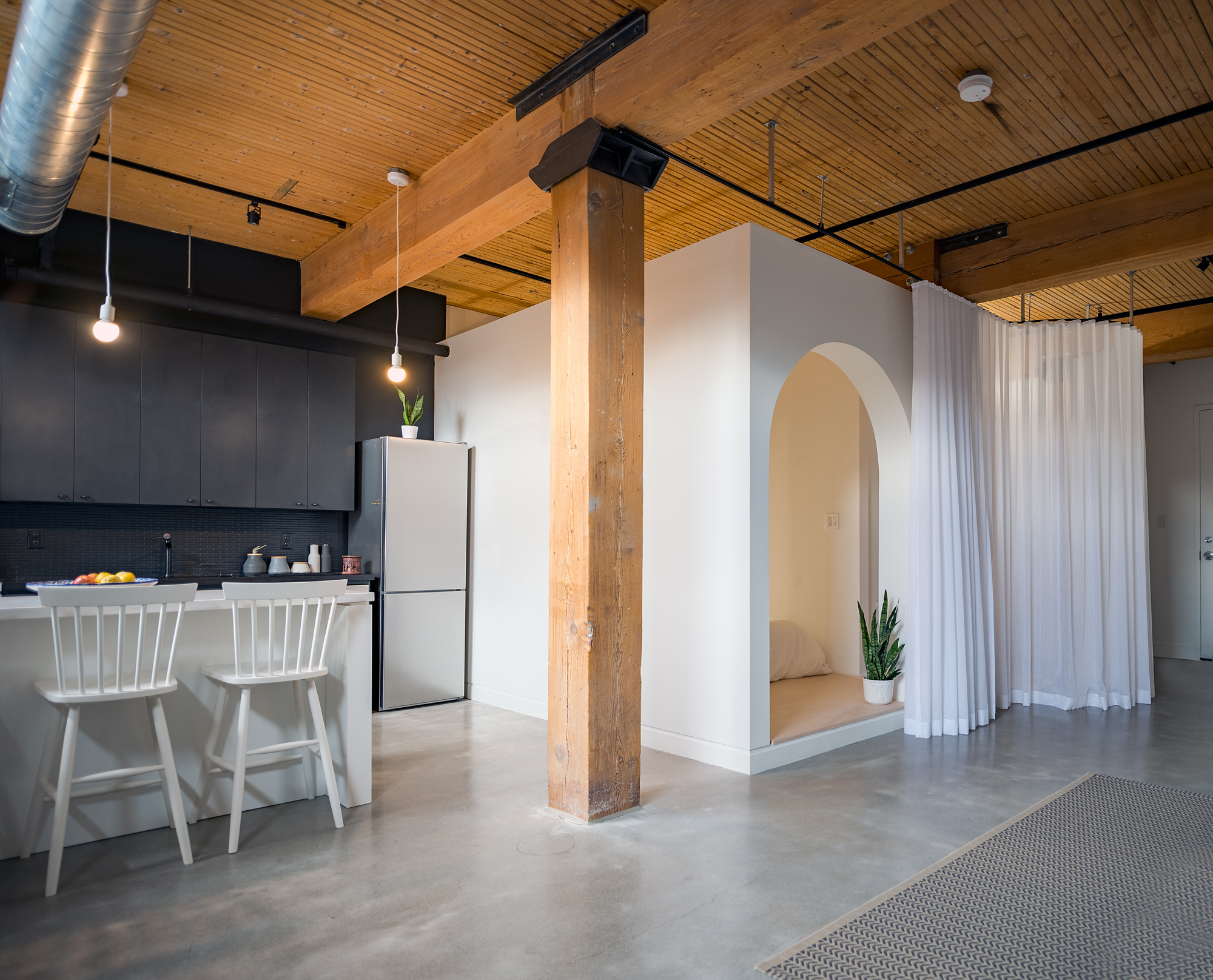
When you're approaching extreme open plan living, such as with a studio apartment, for example, it's hard to differentiate between public and private spaces, which makes entertaining guests in your small but open home feel awkward. However, a curtain can create a soft divide that can be drawn easily out of the way, without cannibalizing all-important floor space.
This loft-style apartment designed by Canadian architects Studio AC may have lofty proportions, but lacked internal partitions to create private space. 'In front of the bed box we utilized a gracious full height sheer that conceals the more private functions of the sleeping quarters, closet space and storage,' explains Jennifer Kudlats, co-founder of Studio AC. 'Using the sheer in an architectural way sees it become a way to define space, provide privacy and acoustic dampening which elevates it as an element and turns it into a focal point and functional conversation piece.'
It works to make the bedroom feel cozier, and more contained for the owner at nighttime, too. 'This spatial play provides a functional and aesthetic flexibility that allows the relatively small studio loft to feel open while allowing the sleeping quarter to feel cozy and concealed,' Jennifer adds.
3. Go sleek with recessed tracks
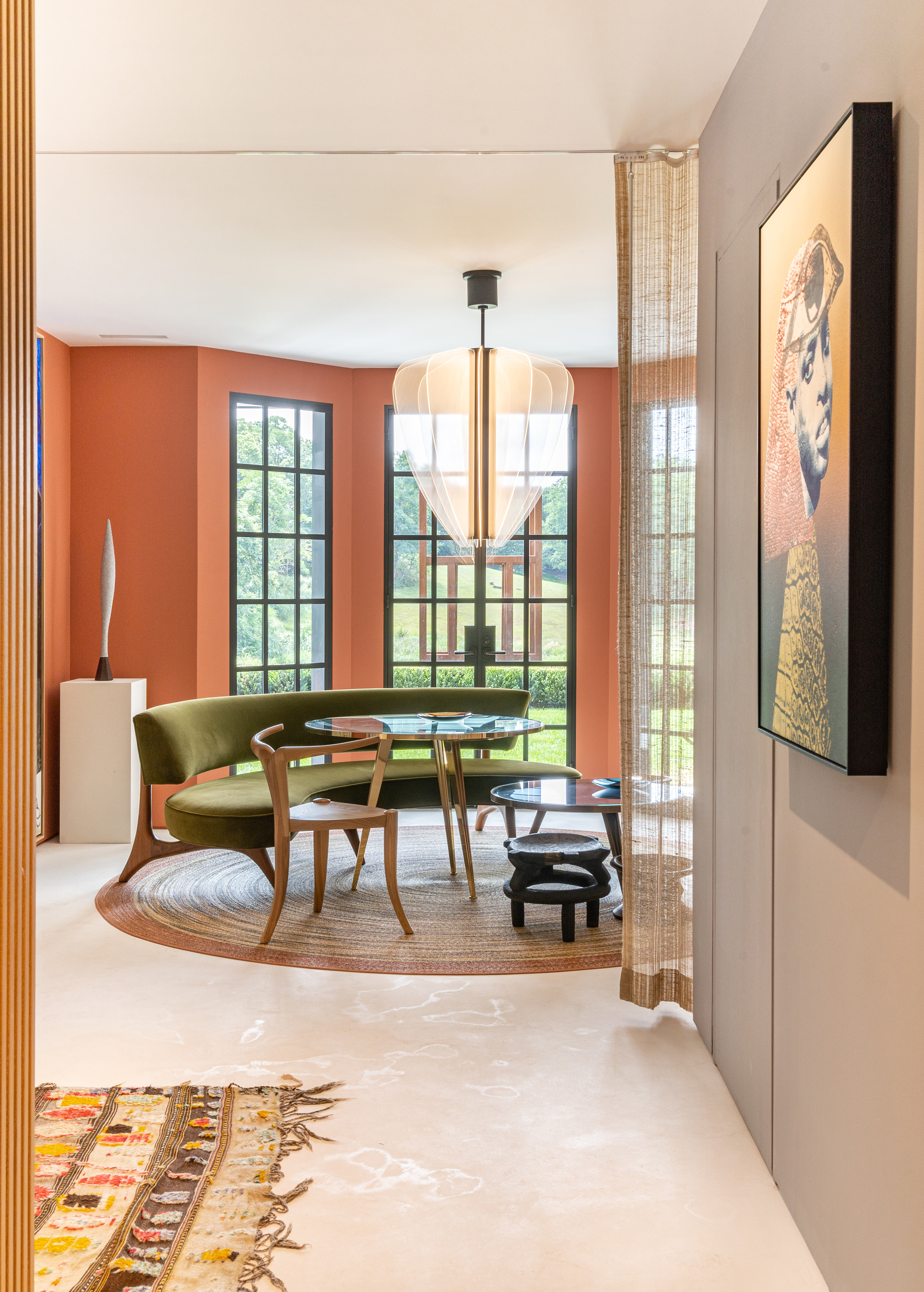
There are plenty of ways to introduce curtains across the center of a room - just as many as there are to mount them for windows. A visible curtain rod may suits some spaces, but can be a clunky application in a sleek, modern space.
In this home, designer Leyden Lewis used a minimal curtain track recessed into the ceiling to minimize its appearance when the living room curtains aren't being used. 'The curtains function as screening devices in a space that requires a visual boundary but not an auditory one,' Leyden explains. 'I am a fan of dense ripple folds on a recessed track. It recalibrates curtains as a spatial element rather than a decorative one.'
4. Combine curtains with a solid room divider
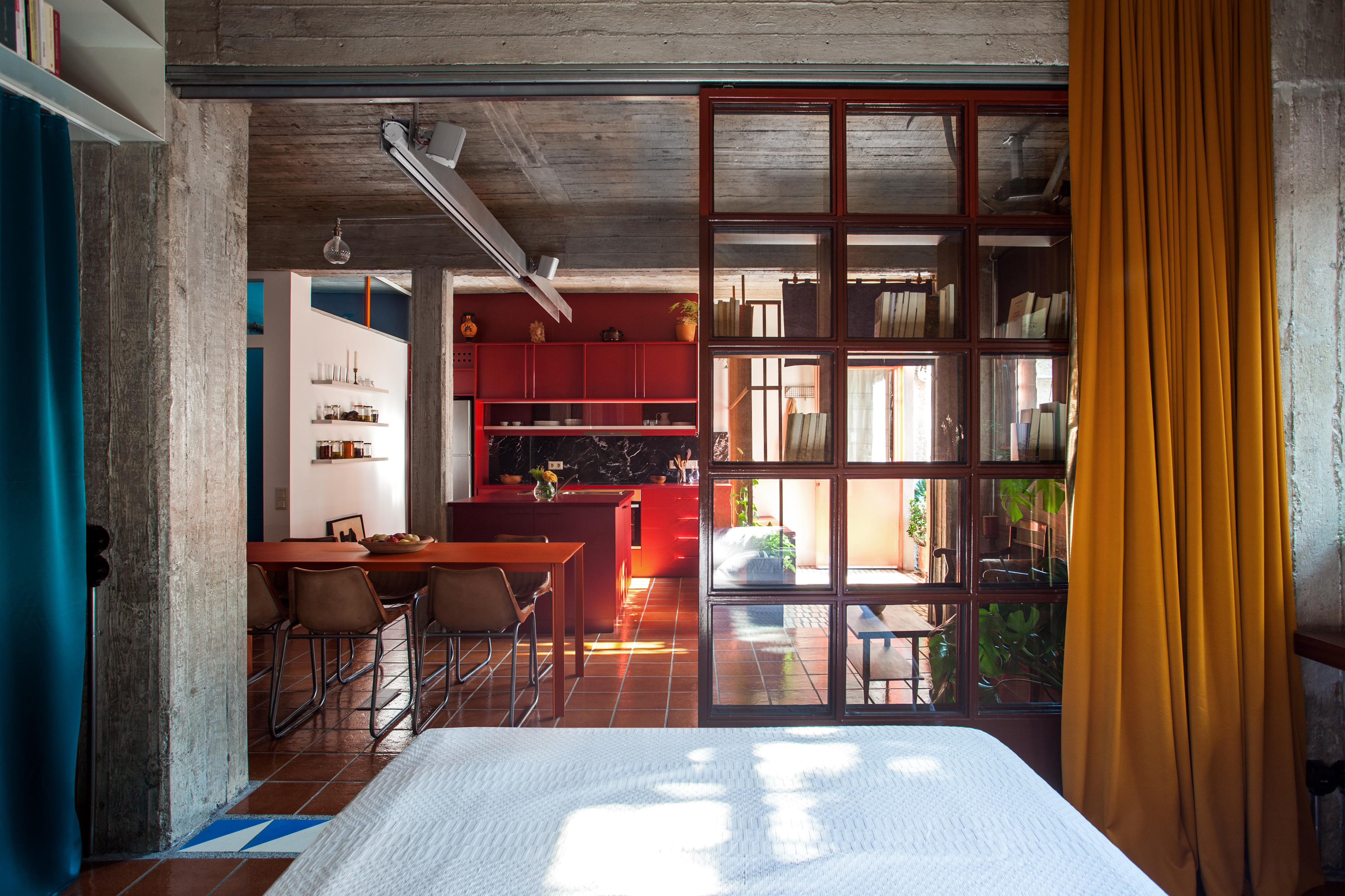
Solid, glass room dividers, such as Crittall style doors, are popular for helping maintain the aesthetic of open plan living, but with the practicality of separate rooms. However, not only are glass dividers not as acoustically sound as partition walls, but they don't allow for privacy in the same way. Here's where a curtain divider comes in.
This studio apartment layout by Athens-based architects Point Supreme uses sliding glass doors lined with curtains to create a space that has all the benefits of an open concept space, while creating concealed spaces, too.
5. Create a temporary room

A curtain could also be used as a temporary measure to separate a certain space. In this example by Robert Simeoni Architects, track mounted sheers surround the dining room of this open concept ground floor. For a dinner party, this creates a space with a magical feeling, adding atmosphere and affording the chef a little privacy in the kitchen.
Be The First To Know
The Livingetc newsletters are your inside source for what’s shaping interiors now - and what’s next. Discover trend forecasts, smart style ideas, and curated shopping inspiration that brings design to life. Subscribe today and stay ahead of the curve.

Luke Arthur Wells is a freelance design writer, award-winning interiors blogger and stylist, known for neutral, textural spaces with a luxury twist. He's worked with some of the UK's top design brands, counting the likes of Tom Dixon Studio as regular collaborators and his work has been featured in print and online in publications ranging from Domino Magazine to The Sunday Times. He's a hands-on type of interiors expert too, contributing practical renovation advice and DIY tutorials to a number of magazines, as well as to his own readers and followers via his blog and social media. He might currently be renovating a small Victorian house in England, but he dreams of light, spacious, neutral homes on the West Coast.
-
 My 10 Favorite Designs at Milan Design Week 2025 — Out of the Hundreds of Pieces I Saw
My 10 Favorite Designs at Milan Design Week 2025 — Out of the Hundreds of Pieces I SawThere is a new elegance, color, and shape being shown in Milan this week, and these are the pieces that caught my eye
By Pip Rich
-
 Iridescence Is Chrome’s More Playful, Hard-to-Define Cousin — And You're About to See It Everywhere
Iridescence Is Chrome’s More Playful, Hard-to-Define Cousin — And You're About to See It EverywhereThis kinetic finish signals a broader shift toward surfaces that move, shimmer, and surprise. Here's where to find it now
By Julia Demer